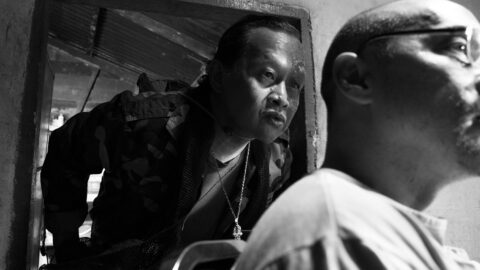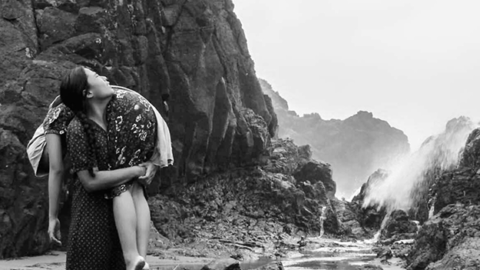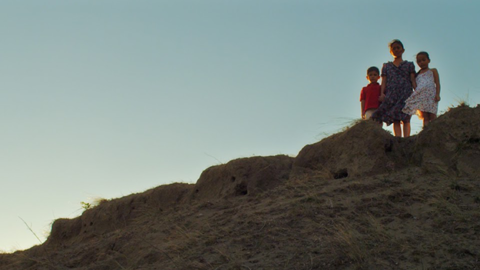Berlin Interview: Lav Diaz
For a director whose films are so frequently reduced to only their marathon running times or consistently severe tone, the Filipino auteur Lav Diaz has tapped into popular forms with remarkable frequency. Following a crime epic (Norte, the End of History), an allegorical ghost story (From What Is Before), a historical fantasy (A Lullaby to the Sorrowful Mystery), and a revenge drama (The Woman Who Left), Diaz returned to the 68th Berlinale with his most unexpected adventure in genre yet. A self-described “rock opera,” Diaz’s latest, the 234-minute Season of the Devil, resembles the musical in shape and sensibility while making mincemeat of its finer points—namely, the instrumental parts. Set in 1979 at the height of the Marcos regime, Season of the Devil follows the fictional poet Hugo Haniway (Piolo Pascual) as he sets out in search of his missing wife Lorena (Shaina Magdayao), a young physician who mysteriously disappears following the opening of a new clinic in a remote village deep in the Philippine jungle. Ruled by a government-sanctioned people’s militia and led by a literally two-faced commander and a savage female soldier-in-arms, the village is under constant siege, with officers enforcing a state of Martial law through physical, psychological, and sexual violence.
Told entirely in a cappella verse, Season of the Devil walks a tight rope between artifice and realism. The songs, written by Diaz himself, are hypnotically simple and frighteningly infectious creations, all dire incantations and wordless repetitions; advancing the narrative while reinforcing the oppressive nature of a fascist philosophy, the melodies accumulate a metaphoric heft through each successive iteration. Combining history and folklore, Diaz draws a direct and powerful line from the Marcos dictatorship to the Philippines of today, led with freshly unscrupulous and amoral tactics by Rodrigo Duterte. With Season of the Devil, Diaz’s decades-long project of excavating and examining Philippine history and its present day parallels has found a striking new means of expression; it makes the pomp and celebration of most movie musicals look hopelessly blinkered and naïve by comparison.
Following the movie’s premiere in competition at the Berlin International Film Festival, Diaz sat down with Film Comment to discuss his composite characterizations, the formal and logistical challenges of making a musical, and his conceptual approach to history and genre.
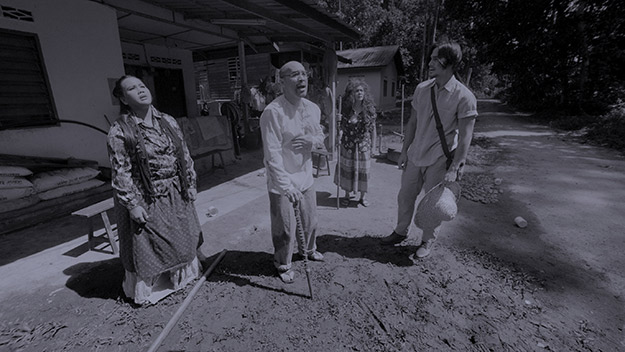
How did you come to this story, and to Hugo Haniway in particular? Is he inspired by specific people and the story by different events?
I invented the name and the character. It’s a composite of many Filipino people: poets, professors, and activists who survived and who were victims of the Marcos regime. I grew up during the period so I was witness to that history. Many poets I know served as inspiration. When you create a character it’s always a composite. You even get a little from yourself—everything’s personal when you create characters, after all.
Your films are most often spoken about with regard to their realism, and don’t usually get enough credit for their relationship to genre: you’ve made crime films, ghost stories, and now a musical. Do you find yourself consciously drawn to genre?
It’s nice to dwell on genres because there are formulas there and you can work with them. But at the same time you’re free to break them. That’s the beauty of understanding genres. There are rules, but you can break them. With a musical there is of course a formula: the calisthenics, the adornments, the arrangements, the manicured movements. But I’ve done away with that. There are songs, but we’ve done away with adornments, instrumentation—even with manicured singing. I said to the actors, “It has to be a cappella, and used naturally, though of course you’re also signing it.” So at the same time it was very conceptual.
Was forgoing instrumentation purely a practical decision, or was it stylistic as well?
It was both. For one we had no time for music. I recorded the songs myself in front of my camera and gave them to the actors and told them to memorize the songs. But it was also a deliberate decision not to use instrumentation. If we wanted to use it, I would have had to hire a musical arranger, and invite my musician friends to come work with the songs. So that was all done away with.
Why did you choose a musical for this particular story? Did it have at all to do with the violence? In other words were the genre elements a way to temper the harsher aspects of the story?
I didn’t think of it as tempering, actually. I was more interested in the songs, and using the songs. It actually started with a gangster movie I’m writing. While writing the script for this gangster film, or film noir, I started to write songs at the same time. And as I was doing this I kept hearing and watching and reading about what’s happening in our country. So these things all informed the songs. And I kept writing, and lamenting, and mourning—writing funeral marches for my country. It’s very elegiac. And from there I thought maybe I could use these to do a musical. I’ve seen a lot of musicals but as a filmmaker I’m not familiar with the form—it’s more what I’ve seen. So I thought of it conceptually, and created all this pagan folklore: the owl, the snake, the traitor, the wise men. And I borrowed some western mythological figures, like the Janus-faced guy, whose name is Narciso, which of course is narcissus. So all these semiotical functions were used for the characters, just as semiotics, the use of meaning, was used in the songs. It’s a mix of realism and conceptual perspectives.
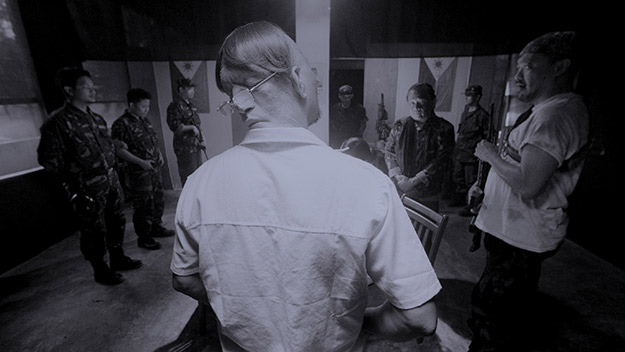
There’s definitely a surrealist streak in the film, something we see quite a bit in your work actually.
Yes, even in the use of the lens. We only used one lens, a really wide 9.8 lens. And we cut each side to appropriate the 4:3 aspect ratio, which is why you see these very surrealistic forms: the foreground is huge and the background seems much smaller, there’s a kind of dip in the compositions. It creates a surreality, which is also quite conceptual.
Where did you shoot the film?
We shot the film in Malaysia, for safety. We couldn’t shoot in Manila, or in some other part of the Philippines because the police are hovering. And the film’s about them! They would see to shutting us down. You get their permit and then they start asking questions. So for precautionary reasons we shot in Malaysia, and looked for places that had similar terrain and geography to the Philippines. To get the film made we actually had to borrow money from the budget for the gangster picture I mentioned. I told the producer that there’s an urgency to make this film. We need to engage with what’s happening in the country right now.
Did you approach the casting process differently knowing you’d need actors who could sing, or at the very least be willing to try and sing?
A majority of the actors are from the theater, so most of them were familiar with musicals. But the only real singer in the film is the storyteller character—she’s not an actor. One thing we did check was the political leanings of each performer: pro-Duterte or anti-Martial Law stances were important aspects of casting.
How important was it to find someone tough enough to play the role of the head female officer? She becomes something of the main antagonist of the film—maybe the most intimidating character of all.
I started by telling her, “You’re not playing a lesbian. You’re playing a man.” Which was a struggle for her to consider how a man moves and how a man thinks—because it’s about machismo. This is a very brutal officer, bordering on psychotic. She had to work on that.
To go back to the songs: they’re very simple and repetitious. Were you trying to create mantra-like melodies for the characters?
Yes, because repetition is about conditioning. If you keep repeating the lines it becomes apocrypha—it becomes the truth. It’s imposing. Fascism is about that, you know? They keep bombarding you with the same authority, the same propaganda—the same sound! They know that. It’s very clinical.
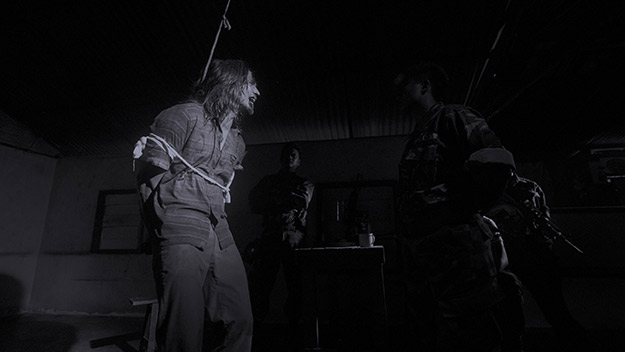
Did you find there to be any changes in how you block the scenes because of the singing and choreography?
In rehearsals I showed the actors the frame. It was just instructional: you move here, you move there—once you reach this part of the song you do this. It was like doing a dance: everything was synchronized.
Did you look at any musicals for inspiration?
I did watch a lot of musicals. And Broadway was very good for the blocking. I like unconventional musicals, rock operas like Tommy, which is quite different. Hair, on the other hand, is very much Broadway, with lots of movement. In another vein, there’s Jesus Christ Superstar, and Quadrophenia. But I wanted rawness. It’s a struggle to use movement without conforming to the musical as we know it. We’re trying to deconstruct it, but also trying to be loyal to the genre at some point.
The movement must be dictated to a certain extent by the songs and the melodies as well?
Yes, and it’s dictated not just by the songs, but also the totality of the scene, the mise en scène. What’s the story of the scene? We have to think about that. If it’s about rape: where will it lead, where will it go? You think of the rhythm of the song and the flow of narrative within the frame, within the scene. Where is the beginning and end of the scene? With this film I had to negate the kind of editing I normally do. In the other films I’m free to cut the scenes off anywhere; this time once the song ends we have to cut it. We recorded the sound live, so there had to be a lot of rehearsals. But most of what you see in the film is actually first takes. So that part of the genre is very imposing, and I only realized that as I was doing it, in postproduction. Leaving gaps after the songs end would sound awkward. There’s still a lot of lulls, but at some point you have to be drawn to the impositions of the genre.
Jordan Cronk is a critic and programmer based in Los Angeles. He runs Acropolis Cinema, a screening series for experimental and undistributed films, and is co-director of the Locarno in Los Angeles film festival.



